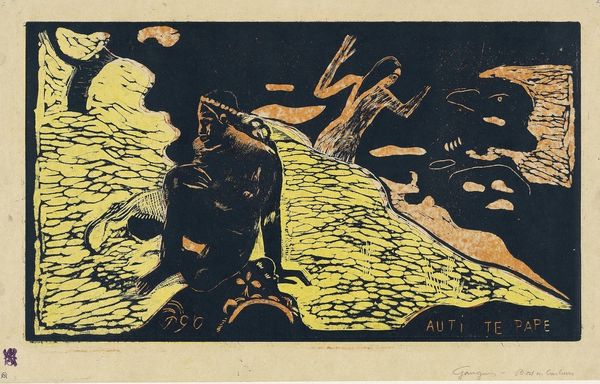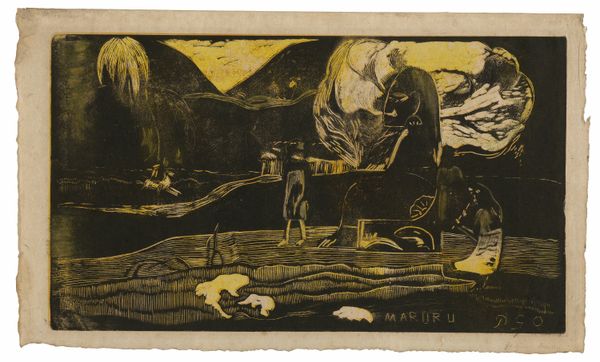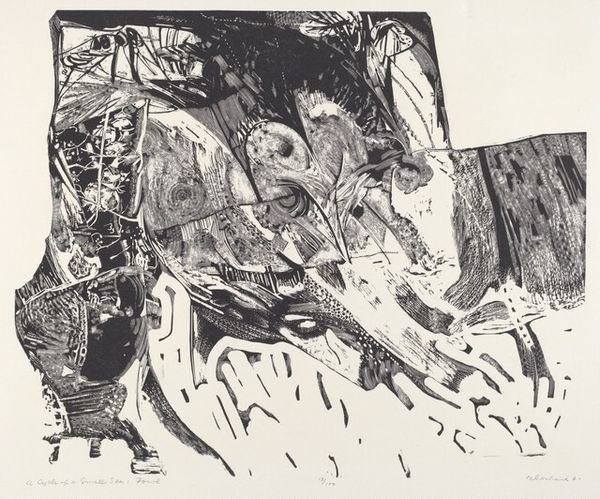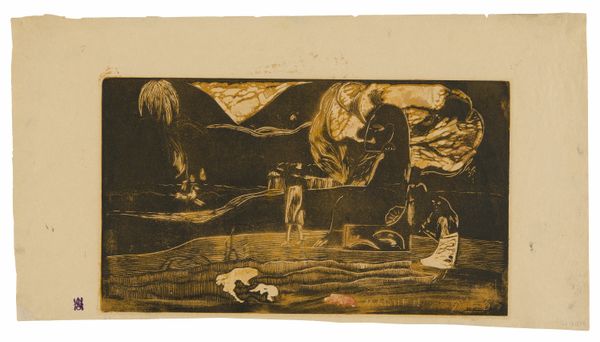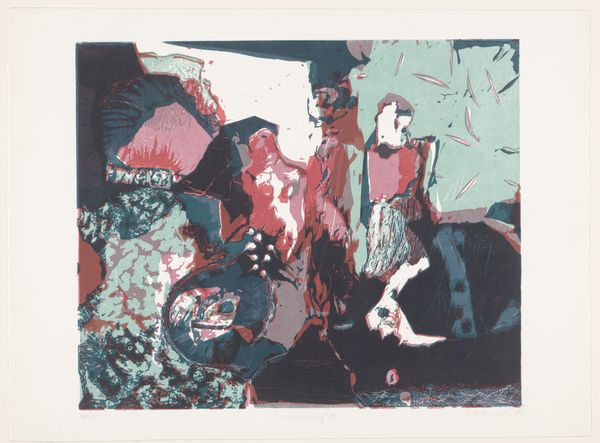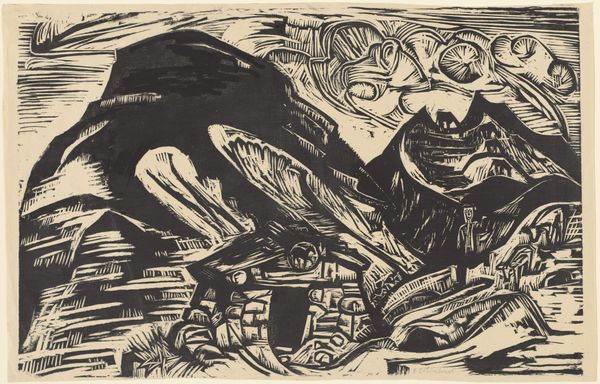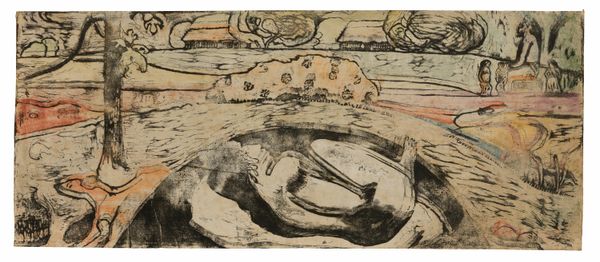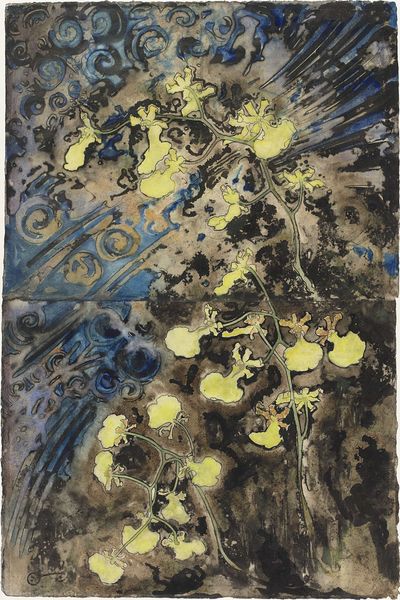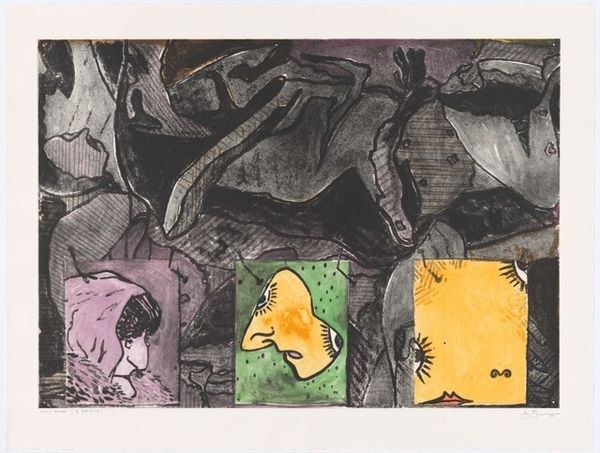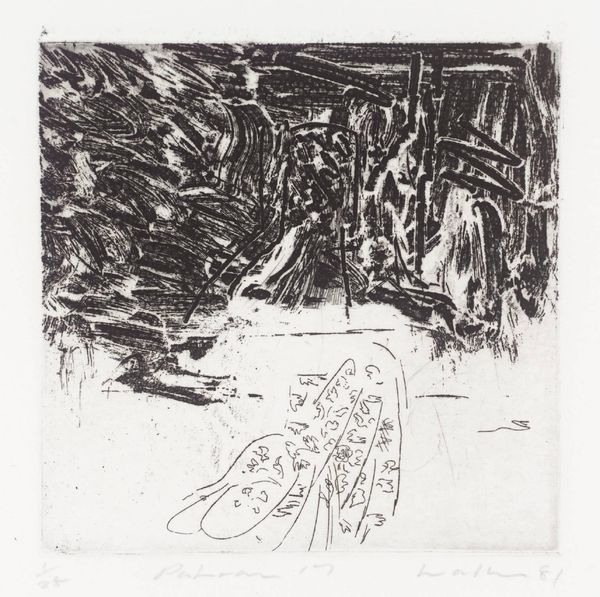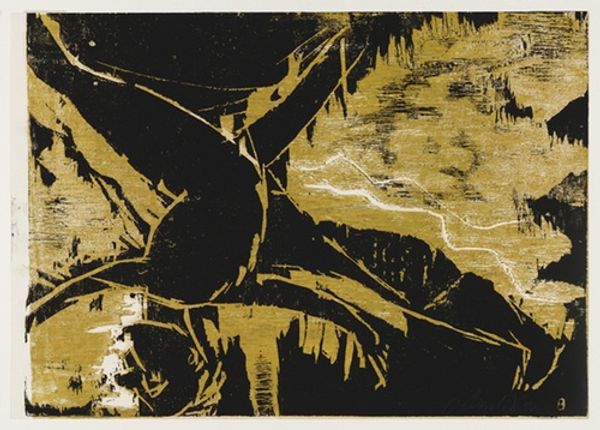
Auti te pape (Women at the River), from the Noa Noa Suite 1893 - 1894
0:00
0:00
drawing, print, paper, woodcut
#
drawing
#
narrative-art
# print
#
landscape
#
figuration
#
paper
#
woodcut
#
orientalism
#
symbolism
#
genre-painting
#
post-impressionism
Dimensions: 203 × 353 mm (image/primary/secondary support)
Copyright: Public Domain
Paul Gauguin made this woodcut titled "Auti te pape," meaning "Women at the River," as part of his "Noa Noa Suite." It reflects his experiences in late 19th-century French Polynesia, a region then under colonial rule. Gauguin appropriates Tahitian imagery, but it's filtered through his European perspective. He romanticizes the women and the landscape, simplifying the complexities of Tahitian culture, which has drawn criticism for its exoticizing gaze. The stark contrasts and flattened perspective are reminiscent of Japanese prints, which were influential in European art circles at the time. To understand this work, consider the broader context of colonialism and its impact on both the artist and the subject. By exploring historical accounts, ethnographic studies, and postcolonial critiques, we can examine the artwork's legacy. It's a reminder that art doesn't exist in a vacuum; it's always shaped by social and institutional forces.
Comments
No comments
Be the first to comment and join the conversation on the ultimate creative platform.
